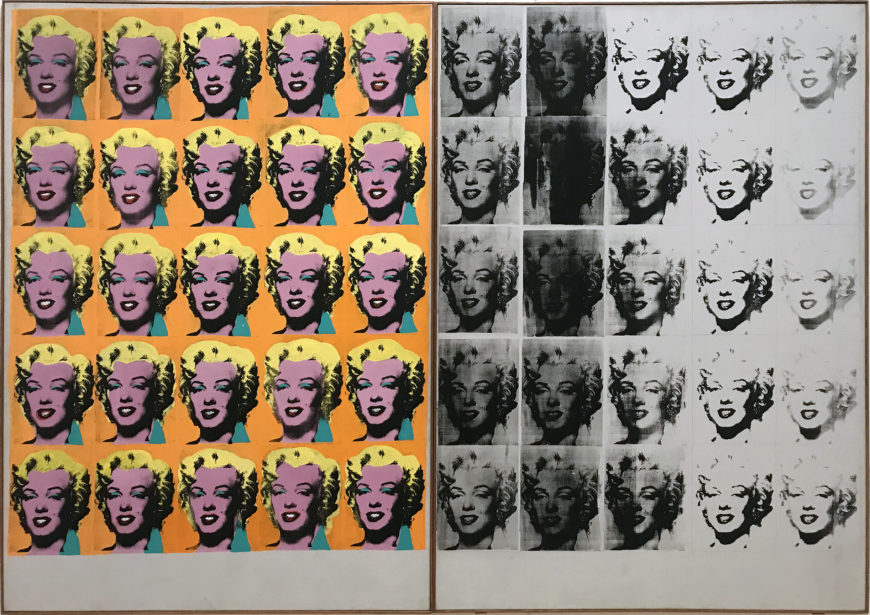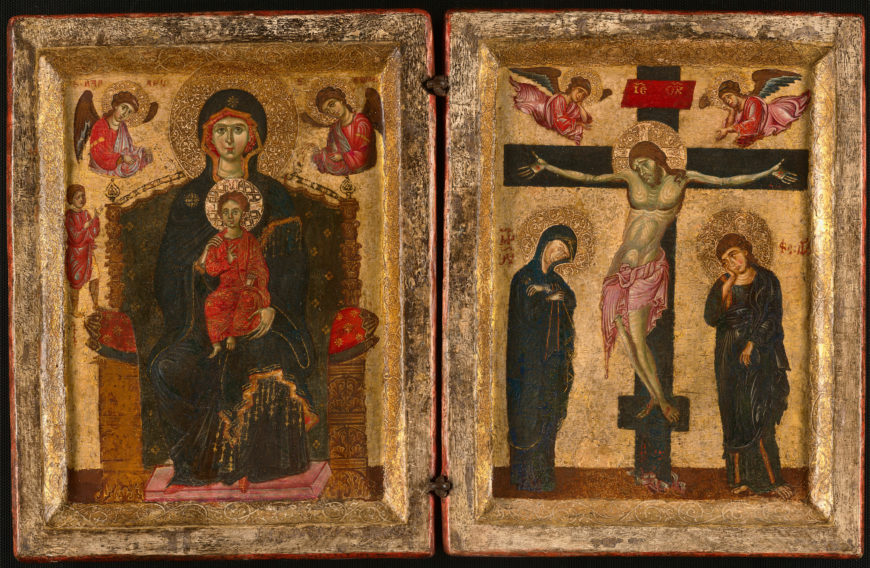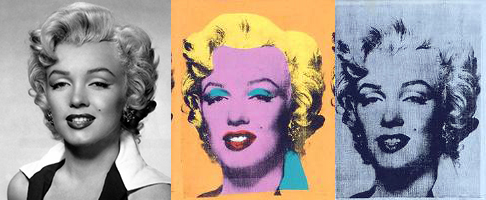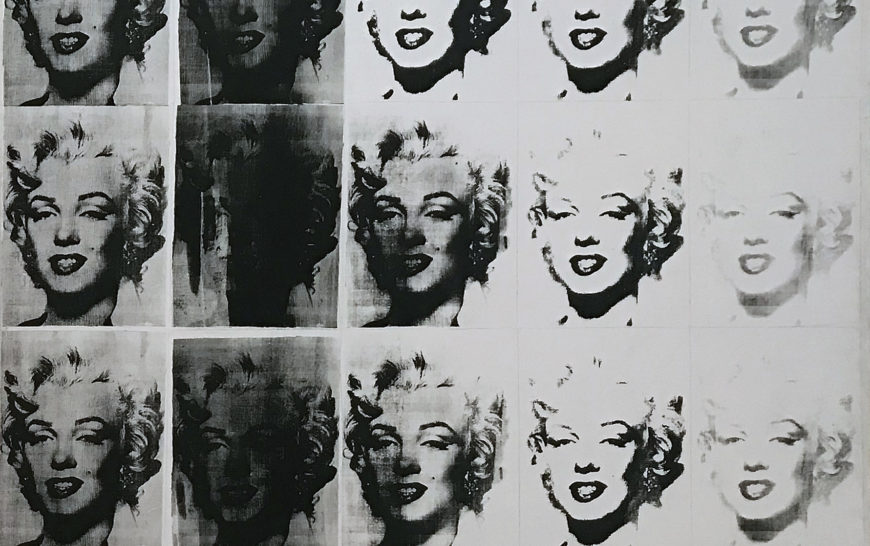Andy Warhol, Marilyn Monroe Diptych

Andy Warhol’s Marilyn Diptych is made of two silver canvases on which the artist silkscreened a photograph of Marilyn Monroe fifty times. At first glance, the work—which explicitly references a form of Christian painting (see below) in its title—invites us to worship the legendary icon, whose image Warhol plucked from popular culture and immortalized as art.

But as in all of Warhol’s early paintings, this image is also a carefully crafted critique of both modern art and contemporary life. The monumental scale of Marilyn Diptych (more than six feet by nine feet) demands our attention and announces the importance of the subject matter.
Warhol takes as the subject of his painting an impersonal image. Though he was an award-winning illustrator, instead of making his own drawing of Monroe, he appropriates an image that already exists. Furthermore, the image is not some other artist’s drawing, but a photograph made for mass reproduction. Even if we don’t recognize the source (a publicity photo for Monroe’s 1953 film Niagara), we know the image is a photo, not only because of its verisimilitude, but also because of the heightened contrast between the lit and shadowed areas of her face, which we associate with a photographer’s flash.

True to form, the actress looks at us seductively from under heavy-lidded eyes and with parted lips; but her expression is also a bit inscrutable, and the repetition remakes her face into an eerie, inanimate mask. Warhol’s use of the silkscreen technique further “flattens” the star’s face. By screening broad planes of unmodulated color, the artist removes the gradual shading that creates a sense of three-dimensional volume, and suspends the actress in an abstract void. Through these choices, Warhol transforms the literal flatness of the paper-thin publicity photo into an emotional “flatness,” and the actress into a kind of automaton. In this way, the painting suggests that “Marilyn Monroe,” a manufactured star with a made-up name, is merely a one-dimensional (sex) symbol—perhaps not the most appropriate object of our almost religious devotion.
Repetitions
While Warhol’s silkscreened repetitions flatten Monroe’s identity, they also complicate his own identity as the artist of this work. The silkscreen process allowed Warhol (or his assistants) to reproduce the same image over and over again, using multiple colors. Once the screens are manufactured and the colors are chosen, the artist simply spreads inks evenly over the screens using a wide squeegee. Though there are differences from one face to the next, these appear to be the accidental byproducts of a quasi-mechanical process, rather than the product of the artist’s judgment. Warhol’s rote painting technique is echoed by the rigid composition of the work, a five-by-five grid of faces, repeated across the two halves of its surface.

Warhol once noted that through repeated exposure to an image, we become de-sensitized to it. In that case, by repeating Monroe’s mask-like face, he not only drains away her life, but also ours as well, by deadening our emotional response to her death. Then again, by making her face so strange and unfamiliar, he might also be trying to re-sensitize us to her image, so that we remember she isn’t just a symbol, but a person whom we might pity. From the perspective of psychoanalytic theory, he may even be forcing us to relive, and therefore work through, the traumatic shock of her death. The painting is more than a mere celebration of Monroe’s iconic status. It is an invitation to consider the consequences of the increasing role of mass media images in our everyday lives.[1]
- Tina Rivers Ryan, "Andy Warhol, Marilyn Diptych," in Smarthistory, August 9, 2015, accessed May 24, 2023, https://smarthistory.org/warhol-marilyn-diptych/ ↵

